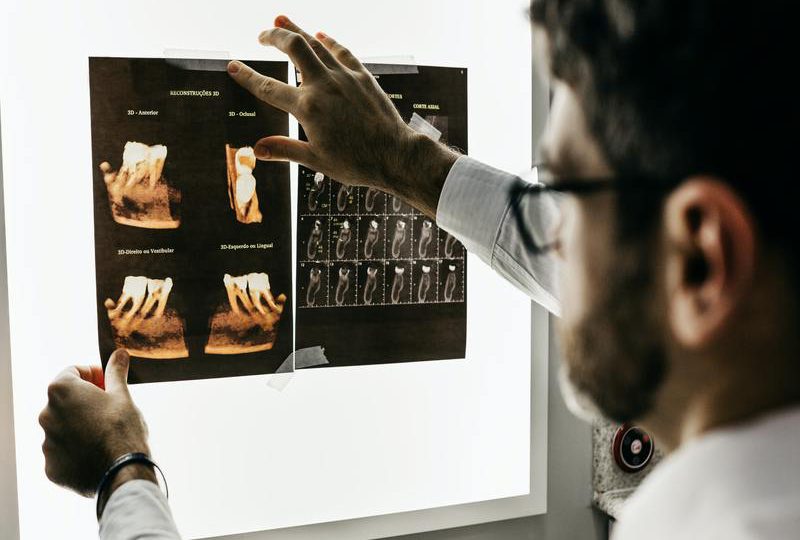We offer the fastest, most accurate and affordable DNA and Forensic services in Nigeria. We know this is a difficult time for you, you want the truth and you want it fast. We will ensure that we make this process as easy and convenient as possible for you.
Please select a test below to read more about it:

Paternity Testing
The most common relationship test is a paternity test, which is used when the paternity of a child is called into question. A child inherits their DNA from their biological parents — half from the mother and half from the father. For a paternity test, DNA samples (oral swabs from the cheek area) are taken from the alleged father, the child, and the mother, if available. We test at least 27 different genetic locations from a child’s DNA and compare them with the same locations from the mother and alleged father. Since the child inherits one copy of this genetic segment from the mother, and one copy from the father, it allows the alleged father to be either included or excluded as the biological father of the child.
Relationship Testing
DNA technology has given us the ability to answer family relationship questions in a variety of situations and circumstances with a great degree of accuracy. These general relationship tests ultimately address questions regarding familial relation to an individual, but they do so in different ways, based on the individuals available for testing as well as the particular DNA test battery used for the test. In relationship testing, we find similarities between Deoxyribonucleic acid (DNA) sequences of tested parties and use this to determine whether there is an existing biological relationship between individuals. One of the uses for this test can be to determine cousinship.


Maternity Testing
A maternity DNA test is used when the maternity of a child is called into question. It is much like a DNA paternity test, but instead compares a child’s DNA pattern with that of the mother. For a maternity test, DNA samples (oral swabs from the cheek area) are taken from the alleged mother and the child, as well as the father, if available. We test at least 27 different genetic locations from a child’s DNA and compare them with the same locations from the mother and alleged father. A child inherits one copy of this genetic segment from the mother, and one copy from the father, thus allowing the alleged mother to be either included or excluded as the biological mother of the child.
Grandparent Testing
If you are trying to confirm if a person is your grandparent or establish paternity, but the father is not available for testing, a Grandparent DNA Test might be the best way to go. In this test a child’s DNA profile is compared with the DNA profiles of the father’s parents. It is important to note that the grandparents must be from the paternal side of the family. Since a child inherits half of his or her DNA from their mother and half from their father, the DNA passed down from the grandparents to the father would also be passed down to the child.


Siblingship Test
When two people are attempting to identify whether they share the same father, and the father is not available to provide a DNA sample, a Siblingship DNA Test can be performed as an indirect way to determine family relationships, including paternity. A siblingship test starts with the analysis of known relatives to determine if two or more people share one or both parents to determine if they are full or half siblings or not biologically related at all.
Twin Zygosity Test
A twins test, also known as a twin zygosity test, is a DNA test that definitively shows whether twins are identical or fraternal. Scientists recommend DNA testing to determine zygosity—the degree of similarity. This test can be used in cases where medical records regarding zygosity may have been lost, or doubt may have arisen because of the twins’ physical characteristics as they age. During ante-natal visits, the physician might be able to tell whether twins are identical or fraternal through ultrasound examination of the placenta. However, there are cases where twins find out much later that a DNA test shows the opposite of what the ultrasound examination showed.


DNA Reconstruction
Parentage testing when the father is not available can be looked at like a puzzle. There may be close relatives of an alleged father that we can test in order to determine paternity of a child. DNA Reconstruction or Family Genetic Reconstruction is a series of DNA tests conducted to determine biological family relationships. Most often, it’s used to confirm if a child is related to the father’s close relatives. This DNA test is an indirect way to determine familial relation when a paternity test is not possible. Results of genetic reconstructions can be used to satisfy curiosity, but also may be used as proof in inheritance claims or other custodial disputes.
Avuncular Test
An “avuncular” test determines if a person is biologically related to a sibling of the father in question. This test is a good option when the father is not available for testing, and the only relative available is a single sibling (brother or sister) of the father. Siblings can be expected to share approximately 50% of their DNA with each other. Therefore, an aunt or uncle can be expected to share approximately 25% of their DNA with a niece or nephew. It may not be possible to achieve a conclusive result with an avuncular DNA test, therefore, testing of additional relatives may be requested.


Male Lineage Test
The paternal relative (Y-STR) comparison test, also known as a paternal or male lineage test, can confirm a relationship to a distant relative. This DNA test is often used to provide additional evidence in difficult paternity situations in which the alleged father is not available for testing—indirectly, it can tell you whether or not a child is related to the alleged father’s brother(s) and other male relatives who share a common ‘paternal’ line.
Female Lineage Test
The MtDNA comparison DNA test, also known as a maternal or female lineage test, can confirm your relationship to long-lost relatives and possible ancestors through the maternal/female line. It can also provide additional information for situations where maternity is in question, but the mother is unavailable for a maternity test–although maternity itself can’t be determined, we can determine the child’s relationship to a possible maternal relative.


Non-Invasive Prenatal DNA Test
Discovering the paternity of a baby before birth is a common wish among women. Paternity questions can add stress—but there is a safe solution. Our technologically advanced Non-Invasive Prenatal DNA Test makes it possible to get accurate answers early in a pregnancy without risk to the baby because we only use blood collected from the mother. Cells from the developing fetus float freely in the bloodstream of the pregnant mother. These fetal cells can be found as early as the 8th week of pregnancy.
Human Remains Identification
DNA analysis is a reliable method for human remains identification and may be the only available method, when other methods of identification like birthmarks, dental records, or fingerprints are impossible or inconclusive. If sufficient DNA can be recovered, forensic DNA typing can identify biological samples—even when the human remains are fragmented and the DNA is degraded. Identifications are made by comparing the DNA profile of reference samples with those from the human remains. The reference samples can be obtained from personal items used by the victim (a toothbrush, hairbrush, or razor) or biological relatives of the victim.


Missing Persons Identification
Unfortunately, there are times when missing persons are not found alive, and the traditional methods used in accurate human identification are impossible due to advanced decomposition or dismemberment of the remains. Forensic DNA typing provides genetic data from a variety of materials and individuals, and is applied to help identify missing persons, which can be used to develop investigative leads to assist law enforcement.
Disaster Victim Identification
Disaster Victim Identification (DVI) is the method used to identify victims of mass casualty incidents, either man-made or natural. In situations of disaster, such as fire, flood, aircraft crash or building collapse, victims become lost in the chaos and often need to be identified for closure for their family members and appropriate burial arrangements. We use DNA technology to properly and diligently identify victims of mass disaster. Direct comparisons can be made between the DNA profile of victims and, for example, a DNA profile generated from cells in a hair brush known to belong to a victim of the tragedy. Indirect comparisons can also be made using the parents’ DNA.

